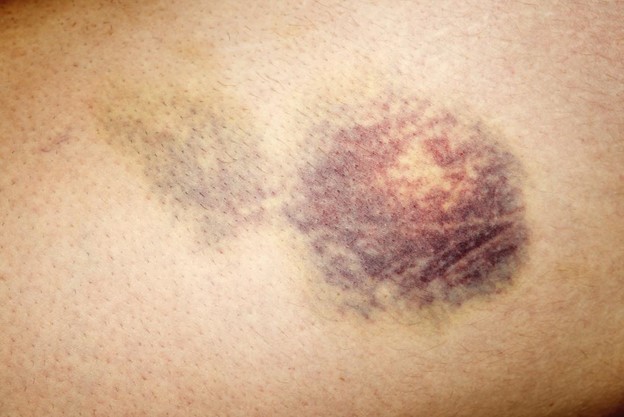A nurse is assessing a client immediately following a cardiac catheterization.
The nurse should notify the provider for which of the following findings?
Heart rate 90/min.
Hematoma over the insertion site.
Bounding pulses in the affected extremity.
Report of discomfort at the insertion site continue.
The Correct Answer is B

A hematoma is a collection of blood outside a blood vessel that can cause swelling, pain, and bruising. It can indicate bleeding from the artery where the catheter was inserted, which can be a serious complication of cardiac catheterization.
The nurse should notify the provider immediately if a hematoma is observed.
Choice A is wrong because heart rate 90/min is within the normal range for adults and does not indicate a complication.
Choice C is wrong because bounding pulses in the affected extremity are expected after cardiac catheterization, as they indicate good blood flow to the area.
Choice D is wrong because report of discomfort at the insertion site is common and usually mild after cardiac catheterization.
The nurse can provide pain relief as needed, but does not need to notify the provider unless the pain is severe or persistent.
Normal ranges for heart rate are 60-100 beats per minute for adults. Normal ranges for blood pressure are 120/80 mmHg or lower for systolic pressure and 80 mmHg or lower for diastolic pressure. Normal ranges for oxygen saturation are 95-100% for adults.
Nursing Test Bank
Naxlex Comprehensive Predictor Exams
Related Questions
Correct Answer is B
Explanation
The correct answer is choiceb. Waits for 2 min between suctions.
Choice A rationale:
Inserting the catheter without applying suction is correct. Suction should only be applied while withdrawing the catheter to prevent trauma to the tracheal mucosa.
Choice B rationale:
Waiting for 2 minutes between suctions is too long.The appropriate wait time is generally around 20-30 seconds to 1 minute between suction attempts to prevent hypoxia and allow the patient to recover.
Choice C rationale:
Applying suction for 15 seconds is within the recommended duration.Suctioning should not exceed 15 seconds to avoid causing hypoxia and trauma to the tracheal mucosa.
Choice D rationale:
Encouraging the client to cough during suctioning is appropriate.Coughing helps to mobilize secretions and can make suctioning more effective.
Correct Answer is A
Explanation

This is because glass ampules can leave small shards of glass in the solution, which can be harmful if injected into the client. A filter needle has a small mesh that traps any glass particles and prevents them from entering the syringe.
Choice B is wrong because the nurse should break the neck of the ampule away from their body to avoid injury from the glass.
Choice C is wrong because the nurse should use a different needle to inject the client after withdrawing the medication with a filter needle. This is to prevent contamination and reduce pain for the client.
Choice D is wrong because the nurse should dispose of the ampule in a sharps container, not in the trash can. This is to prevent injury and infection from the broken glass.
Whether you are a student looking to ace your exams or a practicing nurse seeking to enhance your expertise , our nursing education contents will empower you with the confidence and competence to make a difference in the lives of patients and become a respected leader in the healthcare field.
Visit Naxlex, invest in your future and unlock endless possibilities with our unparalleled nursing education contents today
Report Wrong Answer on the Current Question
Do you disagree with the answer? If yes, what is your expected answer? Explain.
Kindly be descriptive with the issue you are facing.
